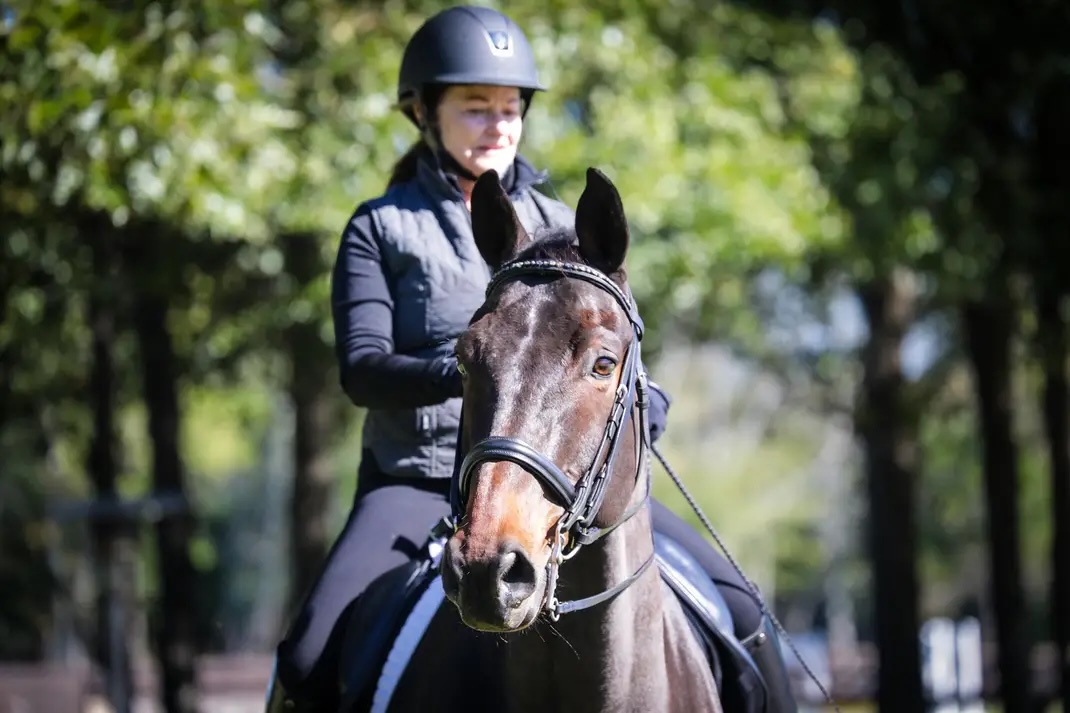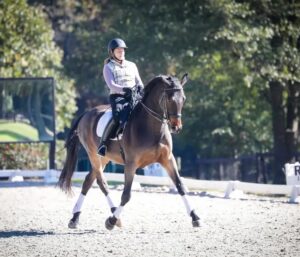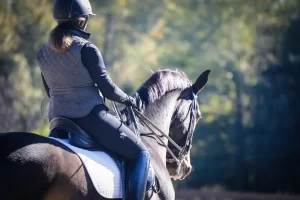Mastering dressage riding mechanics is a journey of continuous learning and refining both the rider’s and the horse’s abilities. Dressage emphasizes precision, balance, and harmony between horse and rider. Here’s a structured approach to developing mastery in dressage riding mechanics:
- Foundation in Position and Balance
— Develop a solid seat: Start with the basics by learning to sit deep and balanced in the saddle. This ensures you’re moving in harmony with the horse. Your weight should be evenly distributed, and your posture should be upright but relaxed.
— Independent hands and legs: Train to have quiet, independent hands and legs. This minimizes unnecessary movement and allows clearer communication with the horse.
— Core strength: Build core strength to support your posture and stability. Pilates or yoga can help develop the necessary muscle control. - Understanding Horse Mechanics
— Learn horse biomechanics: Study how a horse moves—its gaits, the way it uses its hindquarters, and how to engage its core. Understanding this allows you to give more accurate aids.
— Connection and engagement: Focus on getting the horse to work from behind (engagement) and establish a consistent contact (connection). Your goal is to get the horse moving in balance, rhythm, and relaxation. - Perfecting Riding Aids
— Subtle and consistent aids: Dressage is about precision, so mastering subtle aids is essential. Refine your use of seat, legs, and hands to communicate clearly with the horse.
— Timing of aids: Learn to apply aids at the correct moment, which usually happens when the horse’s leg is leaving the ground (during the swing phase). Correct timing maximizes the horse’s response.
— Progressive difficulty: Start with basic movements (circles, serpentines, transitions) and progress to more advanced ones (shoulder-in, half-pass, piaffe). - Developing Rhythm, Suppleness, and Relaxation
— Rhythm: Ensure the horse maintains a consistent rhythm in all gaits. Work on transitions to maintain rhythm through changes.
— Suppleness: Work on exercises like bending, circles, and lateral movements to improve the horse’s flexibility and fluidity of movement.
— Relaxation: Encourage relaxation in both yourself and the horse. A tense rider will create a tense horse, so deep breathing, soft hands, and relaxed posture are key. - Improve Feel and Timing
— Ride frequently with feedback: Ride consistently, and if possible, under the supervision of a coach who can correct small mistakes before they become habits.
— Focus on feel: Developing a feel for the horse’s movement, energy, and balance is crucial. Try to feel every footfall of the horse to know when and how to apply aids.
— Practice transitions: Perfect upward and downward transitions, focusing on smoothness, accuracy, and balance. - Develop Partnership with the Horse
— Mental connection: Dressage is about the relationship between horse and rider. Spend time bonding with your horse on the ground, as well as in the saddle. Understanding your horse’s personality and reactions will enhance your riding.
— Trust and consistency: Consistent and fair training builds the horse’s trust in you as a rider, allowing for better responses to aids. - Work with a Skilled Trainer
— Take regular lessons: A skilled trainer can offer invaluable guidance and corrections, which is essential for long-term progression.
— Get video feedback: If possible, record your rides and review them to spot areas for improvement that you may not notice while riding. - Practice and Patience
— Consistency over time: Mastery of dressage mechanics takes years of practice. Regular, mindful practice is key to steady improvement.
— Be patient: Progress may feel slow, but dressage is about finesse and gradual improvement. - Show Ring Experience
— Compete or ride tests: Enter competitions or ride tests to assess your progress. Feedback from judges can help highlight areas to improve.
— Ride with a purpose: Use each test or practice session to work on specific areas of your riding mechanics. Set small, achievable goals.
By combining these elements—consistent practice, a deep understanding of horse biomechanics, and refining your aids—you’ll develop the mastery needed for dressage riding mechanics.




